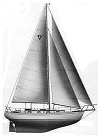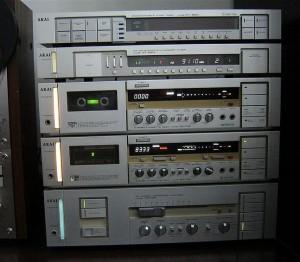

THE RACK SYSTEM—Darth Vader Comes to Audio
A few of you are just about old enough to remember a particularly ugly era in the history of Consumer Electronics, a time that many contend (including me) started audio components on their death spiral that continues even today. It started sometime around 1975 and was pretty much over by the late 1980s. This was the era of the “rack system.”
It was innocent enough at the jump as most evil intended entities are. Separate audio components were hot items in the mid 1970s. Specialty stores were everywhere. Here in the Boston area alone, Harvard Square boasted eight stereo stores at the peak.
Manufacturers, most notably Japanese manufacturers, were in a race for greater and greater market share. By that time they dominated the receiver business, having vanquished or acquired the great American audio brands of the 1950’s and 1960s. They had made great strides in the turntable arena stealing business from European brands by successfully convincing the vinyl buying public, mostly stoners, that playing records one at a time was better for the planet that stacking them on a record changer, that malevolent contraption straight out of your Mom’s fruitwood veneer Sylvania console from 1957.
Yet the boys from the Pacific Rim had close to zero market share in freestanding speakers. True, they had improved the boxes cosmetically moving away from the fretwork grilles of the military PXs in the Viet Nam era to something that at least looked like a KLH. But putting lipstick on those pigs did nothing to help sales and speakers were the most profitable components in the system. (OK. OK. I’m not forgetting phono cartridges.) They needed something to increase the top and bottom lines and sell more speakers. Enter the rack.
The rack system looked like component stereo pieces placed on shelves in a piece of furniture. Safe enough, right? But the “components” were one big piece of electronics that shared a power supply thereby defeating the whole raison d’être for buying components over consoles and compact systems in the first place. It was deceptive. It was hypocritical. And it sounded just dreadful. But it succeeded. It was so successful in fact that major specialty audio stores were forced to carry it for of fear losing business.
The manufacturers sold these things to everyone short of convenience stores. Most notably, they put places like Macy’s and JC Penney in the specialty stereo business for the first time. Craving more, they moved even further down market to the likes of Target and K-Mart. Finally, the systems found their way onto little brochures tucked into virtually every credit card billed ever mailed.
Then suddenly they were gone. But like a hurricane, tornado or tidal wave their relatively brief time on the audio scene caused destruction that would last a long long time. Component audio came back with the rise of home theater but the thrill of a carefully chosen music system was dealt a near fatal blow.
(This piece originally appeared on the CE Pro website December 17, 2013 with the title “Can You Trust Your Vendors?” It has been edited for AIHS and is reprinted with the permission of EH Publishing, Inc.)















Leave a Reply